Frederick Newbold Lawrence (February 28 1834 – December 24, 1916) was my wife’s great great grandfather. He was a son of Edward Newbold Lawrence (1805–1839) and Lydia Ann (née Lawrence) Lawrence (1811–1879). After his father’s death, his mother married her cousin Cornelius Van Wyck Lawrence, who served successively as a U.S. Representative, mayor of New York City, and Collector of the Port of New York. From his mother’s second marriage, he had several half-siblings, including Van Wyck Lawrence and James Ogden Lawrence.
He was a descendant of mayor of New York City John Lawrence and John Bowne, both Quakers and pioneer English settlers of Queens. His paternal grandparents were Hannah (née Newbold) Lawrence and merchant John Burling Lawrence,[3] and his maternal grandparents were Anna (née Townsend) Lawrence and Effingham Lawrence.[4] His uncle Effingham Lawrence is known for serving for the shortest term in congressional history, serving for just one day in the U.S. House of Representatives.
He was a Colonel in the Civil War, twice president of the New York Stock Exchange in 1882-1883, and president of the Union Club. In 1882 Frederick Newbold, as president of the Exchange, was called to testify about the expulsion of a broker accused of dishonest dealings. The judge was (who else?) Judge Lawrence – and yes, he was, like all the Lawrences in important positions New York, a relative.
In 1888 President Grover Cleveland visited New York; he was welcomed by Frederick Newbold who eulogized his administration.
A Fast Trotter (Dan Patch)
The sport that Frederick Newbold favored was fast trotting. In May 1900 Carlyle Carne, driven by Col. Fred Lawrence, “the veteran road rider,” beat Cobwebs, driven by Nathan Strauss.
“2,500 or 3,000 pedestrians were on hand, hopeful of witnessing a battle royal between the rival fliers.
Cobwebs wore a pair of knee boots, held in place by blue elastic bands passing over his shoulders, and Carlyle Carne was rigged with white felt ankle and tendon boots forward, with scalpers and shin boots behind.
The New “King of the Speedway” is a flea bitten grey gelding., upward of sixteen hands high. He was foaled in 1891 at Portland Ore. , and was bred by Van B. de Lashmutt. His sire was Hambetonian Mambrino, a son of Menlaus by Rysdyk’s Hambletonian. Carne’s dam was Lady Gray, by Confederate Chief, granddam by General Knox. The horse came out as a three-year old and has been campaigned every year since 1894. Colonel Lawrence bought him last fall for $1,375 [about $40,000 in 2020 dollars].”
( I detect in here a parody of the society page – who was wearing what, ancestors, money.)
In November 1900, Col. Fred, as he was known in sporting circles, did not intend to drive for a while so he sold Carlyle Carne at auction. The buyer was Foxhall Keene, his son-in-law.
Frederick Newbold had a town house at 18 West 53rd St NY and an apartment at the Croisic. In March 1908 the New York Times reported of Frederick Newbold:
He was ill when he went to the Croisac last Sunday afternoon, and a few minutes after he entered his apartments the elevator boy hear a fall. He investigated and found Mr. Lawrence senseless on the floor with a large cheval looking glass, which had been upset, on top of him. Pneumonia developed and the case was pronounced serious from the first.
He recovered, and his physician credited the recovery to Frederick Newbold’s twenty-year course of vegetarianism. Lawrence died in his townhouse at 57 West 52nd Street, which he had built shortly before his death, on December 24, 1916. He was buried at Lawrence Burying Ground in Bayside.
Frederick Newbold married Elizabeth Boyce (1835-1894) on December 6, 1855 in South Carolina. They had three daughters, Mary, Virginia Lee, and Elizabeth, from whom my wife is descended.
Lillie Lawrence (1857–1920),[ who married Brig. Gen. Charles Hedges McKinstry, an engineer and army officer.[14]
Mary “Tibbie” Lawrence (1859–1942),[ who married stockbroker Frank Worth White (1856–1887) in 1878. After his death, she married Foxhall Parker Keene in 1892. Keene was the son of James Robert Keene, a former president of the San Francisco Stock Exchange. They divorced in 1909.
Elizabeth Lawrence (1862–1906), who married J. Henry Alexandre (1848–1912), a son of Francis Alexandre, in 1887. Alexandre was prominent in steamship circles (the Alexandre Line was bought out by rival Ward Line in 1888).
Virginia Lee Lawrence (1864–1891), who married Lewis Meredith Howland, a son of Edgar Howland of Howland & Aspinwall, in 1883. Samuel M. Roosevelt, Howland’s business partner, was his best man. After her death, Lewis married Leonora von Stosch (they later divorced and Leonora married Sir Edgar Speyer).
His Houses
The Oaks, Queens
Frederick Newbold constructed The Oaks mansion.
He sold it to restaurateur John Taylor in 1859 who transformed it into greenhouses specializing in roses and orchids. It became the Oakland Golf Club 1886.
Oakland Golf Club
Oakland Lake is located in a ravine in Bayside. It was also once called Douglas Pond after a local landowning family. They also developed nearby Douglaston. Oakland took its name from “The Oaks,” estate of Frederick Newbold Lawrence, who also descended from a local colonial settler family.
In 1896, his estate became a golf course, and in turn, it became CUNY’s Queensborough Community College in the 1960s.The lake was is subject to algae and silting and still requires plenty of care to ensure its preservation.
Oakland Lake
This pond can be found at Cloverdale Boulevard and 46th Avenue, one block south of Northern Boulevard.
The neighborhood of Oakland Gardens is named for a private estate called “The Oaks” that once occupied much of the area. John Hicks, one of Flushing’s original patentees, settled the area in 1645 and named his estate after the trees in the region. The estate, which spread from present-day 46th Avenue to the Long Island Expressway, passed through several owners, and in 1859 was bought by John Taylor, a successful restaurateur from Manhattan. Taylor and his partner, John Henderson, transformed The Oaks into a horticultural paradise with more than 30 greenhouses, specializing in roses and orchids. In 1896, John H. Taylor, son of the restaurateur, organized the Oakland Golf Course on 110 acres in the area. Most of the single-family houses and apartment complexes in Oakland Gardens today were constructed during a post-World War II building boom, when the area turned into a thriving suburban neighborhood.
Stone House, Queens
Stone House in Winter
Stone House was built in 1822 by Judge Effingham Lawrence. He left it to his daughter Lydia; when she died in 1879, she left it to her son Frederick Newbold, who expanded it with a dining room to seat 80. It was demolished by developers in 1956.
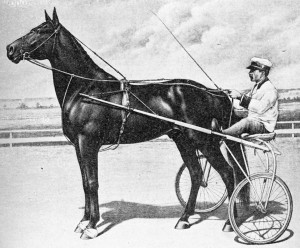
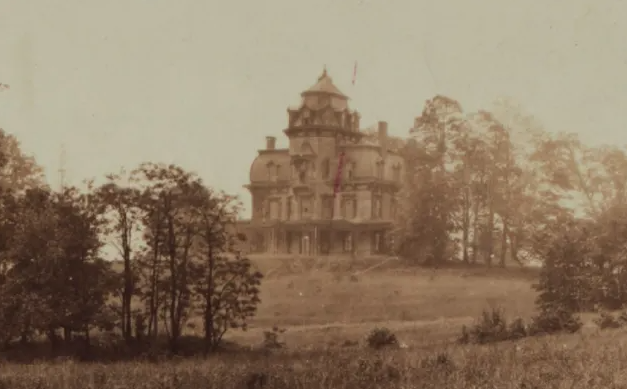
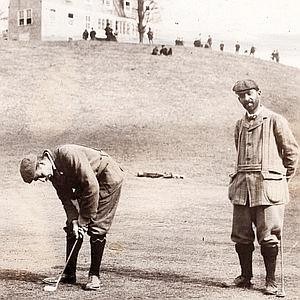
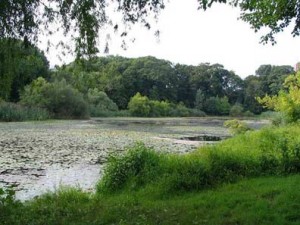
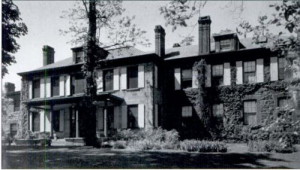
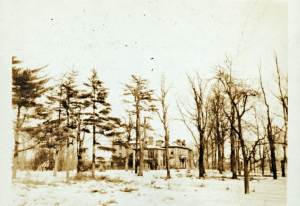
Thank you for writing about my direct ancestors Effingham, Lydia and Frederick. It’s nice to see some parts of the information my father put together in our extensive family tree on your website. In 1972 I first visited the Bayside Historical Society and photographed many of our family paintings still in the Lawrence home in Lawrence. LI. I have visited numerous times over the decades and was out recently (April 2015) visiting our Lawrence NY Landmark graveyard on 216th (where they are all buried) and to the Queens Historical Society doing some more Flushings research. Standing by the shore of the meadow near the present U-haul Building was inspiring!
Respectfully, Robert Edmund Lawrence Jr